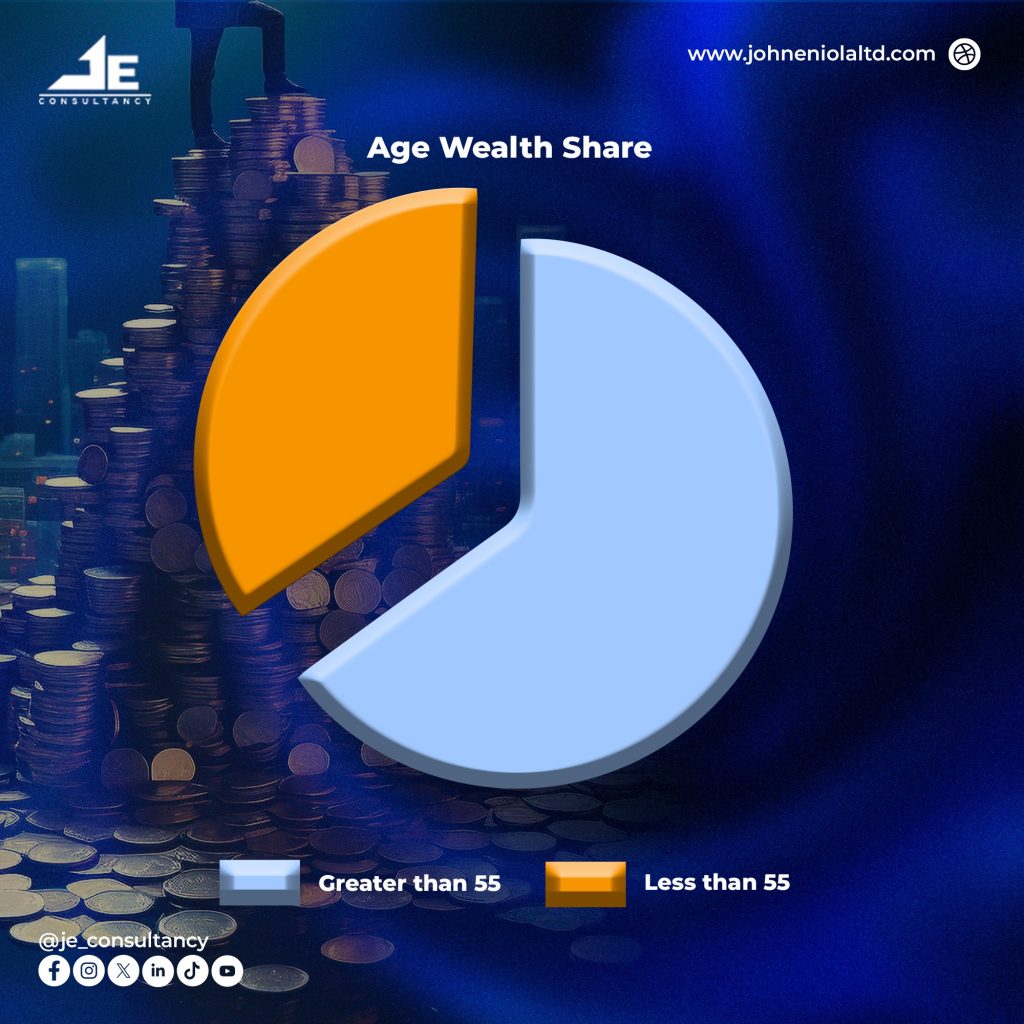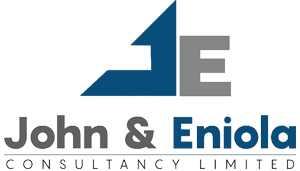Definitions of Key Terminologies
Before delving into the main write-up, below are some definitions of key terminologies as they relate to this journal:
- Wealth: A great amount of valuable assets or material possessions. An abundance of valuable possessions or money.
- Demography: The study of the characteristics of human populations, especially with regards to their makeup and fluctuations and the social causes behind these.
- Demographics: The characteristics of human populations for purposes of social studies. Characteristics used to classify people for statistical purposes, such as age, race, gender, marital status, education, income, occupation, etc.
- Mapping: An operation that associates each element of a given set (the domain) with one or more elements of a second set (the range). It is also an activity or process of creating a picture or diagram that represents something.
Age Classifications in this write-up:
- 18 – 25: Youths
- 26 – 40: Younger Adults
- 41 – 59: Adults
- 60 – 90: Older Adults

Definition of Ownership Wealth Demographic Mapping
Ownership Wealth Demographic Mapping is the process of analysing and visually representing how wealth is distributed among different social demographic groups. It helps identify economic disparities based on race, ethnicity, gender, age, geography, and socioeconomic class. It is a valuable tool for policymakers, researchers, and advocacy groups aiming to promote equity and address systemic inequalities.

Importance of Wealth Demographic Mapping in Nigeria
Wealth demographic mapping is important because it provides valuable insights into the distribution of wealth within a population, which can help inform policy decisions, target interventions, and understand social and economic trends. By mapping wealth, it is possible to see how different demographics are affected by wealth inequalities, which can have implications for health, education, and overall well-being.
Key Indices the Nigerian Government Can Employ:
- Identifying Wealth Disparities Wealth in Nigeria is unequally distributed and influenced by region, gender, and social class. Lagos and Abuja are the wealthiest, while northern states have higher poverty levels. Addressing these economic gaps can help reduce inequality, which could be responsible for other societal issues like insecurity, illiteracy, etc., ravaging the country.
- Informing Economic Policies & Reforms Wealth mapping can be used to assess the impact of policies and interventions on wealth inequality and ensure that resources are reaching the people who need them most. This can be achieved through taxation reforms, land ownership policies, etc., geared towards wealth redistribution. For example, if data shows that people in rural areas have limited access to financial services, policymakers can establish microfinance programmes to bridge these financial gaps.
- Promoting Financial Inclusion Many Nigerians cannot access banking, credit, or investment opportunities. Women and rural farmers are among the groups that need better financial access. This can encourage targeted policies such as low-interest loans and the expansion of digital banking infrastructure.
- Supporting Business & Investment Decisions Businesses can use demographic mapping to identify underserved markets and target investments—expanding operations and providing goods/services to groups with high purchasing power that are inadequately serviced.
- Addressing Gender Wealth Gaps In Nigeria, women own less than 20% of land and businesses due to cultural and legal barriers. Mapping wealth distribution between genders can support programs that empower women and promote equal access to wealth and economic opportunities.
- Understanding Regional Economic Strengths & Weaknesses Regions in Nigeria have different economic strengths, such as oil in the South-South and agriculture in the North. This knowledge helps the government and businesses decide where to invest in infrastructure, education, and industry.
- Encouraging Generational Wealth Building In Nigeria, wealth is concentrated among older generations, leaving youths and younger adults to grapple with poverty due to high unemployment and underemployment. Government should leverage data from wealth mappings to formulate policies that promote job and wealth creation for younger generations, reducing the prevalence of vices linked to idleness.
- Enhancing Taxation & Social Welfare Planning Wealth demographic mapping helps governments create fairer tax systems by identifying high earners and ensuring they contribute more. The government should implement policies that relieve the poor of heavy tax burdens while closing tax loopholes exploited by the wealthy.
Nigeria’s Economic and Wealth Landscape
In 2024, Nigeria declined to become Africa’s fourth-largest economy, with a nominal GDP of about $188 billion. The country continues to struggle with significant inequality, with over 40% of its population living in poverty. Despite various economic reforms and dependence on oil exports, wealth distribution remains uneven.
Dominance of the Oil & Gas Industry
Nigeria is a major crude oil producer, with oil and gas accounting for about 90% of export income. However, this wealth is concentrated among a small elite, resulting in widespread poverty. The oil industry provides limited employment opportunities and benefits mainly foreign firms, top government officials, and political officeholders. It also poses environmental hazards, especially in the Niger Delta.
Wealth Concentration Among the Top 1%
The richest 1% hold a significant portion of the nation’s wealth. Nigeria has about five billionaires and over 10,000 millionaires, while a large majority struggle to meet basic needs. Wealth is concentrated in banking, telecom, oil, and real estate, with billionaires like Aliko Dangote, Mike Adenuga, and Abdul Rabiu controlling over $30 billion combined.
High Poverty Rates Despite Economic Growth
The wealth gap is widening. Urban elites in cities like Lagos, Abuja, and Port Harcourt are becoming wealthier, while rural areas continue to struggle. Urban areas offer better opportunities but also have a high cost of living, making survival difficult. Conversely, rural regions, especially in the North, rely on subsistence farming, facing limited access to education and healthcare.
For instance, a banker in Lagos might earn ₦500,000 ($600) monthly, while a farmer in Katsina may earn less than ₦30,000 ($36).
Historical Context of Wealth Ownership in Nigeria
Pre-Colonial Era (Before 1900)
- Wealth was based on farming, trade, and land ownership.
- Each ethnic group had its economic system:
- Yoruba and Hausa empires thrived in trade.
- Igbo communities promoted distributed wealth via small-scale entrepreneurship.
- Traditional rulers and merchants controlled most wealth.
- Wealth was accumulated through slave trade, agriculture, and taxation.
Colonial Era (1900–1960)
- The British introduced new laws like the Land and Native Rights Ordinance (1910, 1916), transferring land ownership to the colonial government.
- Nigerians lost access to land, leading to limited control over resources.
- Export-focused agriculture created dependency on imports.
- British companies like UAC dominated, controlling over 40% of export trade.
Post-Independence Era (1960–Present)
- Post-independence saw wealth increasingly concentrated among a privileged elite.
- The 1970s oil boom and corruption fueled this concentration.
- The 1978 Land Use Act centralized land ownership, restricting access for the common people.
- The 1986 Structural Adjustment Programme (SAP) triggered:
- Increased poverty and unemployment
- Reduced social welfare programs
- Privatization that enriched a few individuals, creating oligarchs
- However, SAP also opened up Nigeria to global trade and private sector growth, giving rise to billionaires in sectors like banking and telecom.
Demographic Factors Influencing Wealth in Nigeria
1. Regional Wealth Disparities
- The South is more industrialized, while the North remains less developed.
- The North struggles with insecurity, poor infrastructure, and low investment, relying mostly on non-mechanised agriculture.
2. Wealth by Ethnicity
- Nigeria has over 371 ethnic groups.
- Hausa-Fulani dominate agriculture and politics.
- Yoruba excel in business and professions.
- Igbo are renowned for entrepreneurial and trading activities.
3. Wealth by Gender
- Customary inheritance laws often exclude women from land ownership.
- Gender pay gaps and cultural discrimination limit women’s access to wealth.
- Women are concentrated in small-scale businesses (fashion, catering, trading).
4. Age-Based Wealth Disparities
- Wealth and property are controlled by older adults (41–90 years).
- Younger adults (18–40) face barriers in access to land, finance, and networks.
- With unemployment exceeding 40%, many youth are exploring alternative paths through:
- Fintech
- Entertainment (Nollywood, music)
- Technology start-ups
Ownership Wealth Demographic Mapping in Nigeria reveals significant economic inequalities based on region, gender, ethnicity, and age. Despite its status as one of Africa’s largest economies, wealth remains concentrated among a small elite, especially in oil, banking, and telecom sectors.
Key Insights:
- Historical events, poor government policies, and structural barriers have entrenched inequality.
- Women, youths, and rural communities are the most economically marginalized.
To achieve fairer wealth distribution, Nigeria must:
- Promote economic diversity
- Ensure financial inclusion
- Reform land ownership laws
- Close gender gaps
- Invest in rural infrastructure
- Create employment opportunities for youth
These measures will foster sustainable economic growth and reduce poverty and inequality in the long term.
